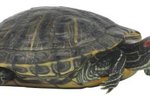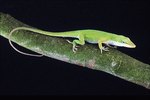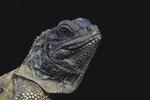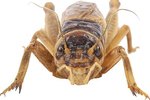With the proper care and feeding, bearded dragons can grow up to 2 feet in length. Just like humans, they grow at different rates, sometimes up to 1 inch a week when juveniles. Factors influencing growth rates within your control include cage size and placement, amount and type of food, competition for food, amount of light, type and amount of UV light, proper vitamins and supplements.
Place your dragon in a tank at least 40 gallons in size; two dragons need a 55-gallon tank for proper room to grow. A hatchling up to 12 inches can be kept in a 15-gallon tank. As it grows, the tank size should be increased.
Providing proper lighting for heat will ensure active digestion. Include a basking spot around 90 to 115 degrees Fahrenheit to keep the lizard's digestive system working fast. If it digests too slowly due to cool habitat temperature, it will eat at a slower pace.
Feed your dragon as much as it will eat to grow fast. This could mean up to 12 crickets three times a day. These feeder insects should be “gut-fed” (fed with vitamin and mineral rich foods prior to feeding to other animals). Supplement its diet with high-calcium greens such as collard greens, mustard greens, kale and beans.
Provide a calcium supplement by dusting over crickets or spraying over greens every other day.
Provide a lot of water by spraying its head directly or misting its vegetables to prevent dehydration which contributes to thinning.
Tips
Do not feed your dragon iceberg lettuce as is has very little nutritional value and may give it diarrhea prompting dehydration.
Warnings
Regulate the size of the cricket fed to your dragon, especially in the juvenile stage. Too large a meal has been associated with partial paralysis and hind leg extension. If you take your dragon outside or allow it to roam about the house, be sure to check that the possible munchies are not poisonous.
A steady diet of high-fat foods will make your dragon grow faster, but can also cut its lifespan in half.
References
Photo Credits
-
BananaStock/BananaStock/Getty Images





